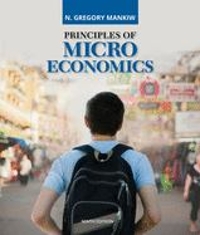Question
QUESTION 1 1. Money is a. any item that can serve as store of value. b. any item that can serve as unit of account.
QUESTION 1
1.
Money is
a.
any item that can serve as store of value.
b.
any item that can serve as unit of account.
c.
any item that can be exchanged for goods and services.
d.
any item that can be exchanged for goods and services and at the same time can serve as store of value and unit of account.
QUESTION 2.
The interest rate is
a.
the price of using money.
b.
the return on holding gold.
c.
the return on holding the stocks of private companies.
d.
the extent of enthusiasm about learning about the economy.
QUESTION 3.
In today's economies, the supply of money in an economy is
a.
fixed by law.
b.
determined by the amount of gold held by the central bank.
c.
determined by the amount of all precious metals held by the central bank.
d.
determined by the amount of foreign assets held by the government.
e.
determined by the central bank's policies.
QUESTION 4.
Which one of the following events causes anincreasein the demand for money in an economy?
a.
A decline in the propensity to hold money, given the interest rate, the price level, and the real GDP.
b.
An increase in the interest rate, given the price level, the real GDP, and propensity to hold money.
c.
An increase in the price level, given the real GDP, the propensity to hold money, and the interest rate.
d.
A reduction in the value of market transactions, given the propensity to hold money and the interest rate.
e.
A rise in the average value of non-market economic activities carried out by households with no effect on market activities.
QUESTION 5.
As the European economy recovers from the COVID-19 pandemic this year, both the aggregate real income and the price level in the country are rising. If the interest rate and the propensity to hold money remain unchanged, the demand for money in Europe
a.
will rise.
b.
will decline.
c.
will remain unchanged.
d.
may rise or decline depending on the rate of interest prevailing in the economy.
e.
will decline if the rise in the price level is less than the increase in the aggregate real income.
QUESTION 6.
In 2019 in Vietnam, money supply,Ms, was 2,500 trillion Vietnamese dong, the one-year nominal interest rate,i, was 6 percent (i= 0.06), and money market was in equilibrium,Ms= kPY/i. If at the time, the propensity to hold money wask= 0.025, what was the nominal GDP,PY, of the Vietnamese economy in 2019?
a.
150 trillion Vietnamese dong
b.
1,042 trillion Vietnamese dong
c.
2,500 trillion Vietnamese dong
d.
6,000 trillion Vietnamese dong
e.
41,667 trillion Vietnamese dong
QUESTION 7.
In question 6 above, suppose in 2020 Vietnam's nominal GDP and the propensity to hold money remained the same as they were in 2019. If the central bank wanted to lower the interest rate to 4 percent in 2020, how much money should it supply to the market?
a.
1,667 trillion Vietnamese dong
b.
1,750 trillion Vietnamese dong
c.
2,500 trillion Vietnamese dong
d.
3,750 trillion Vietnamese dong
e.
4,000 trillion Vietnamese dong
QUESTION 8.
The LM curve shows how
a.
the exchange rate is determined by real income in the money market.
b.
real income is determined by the rate of interest in the money market.
c.
the rate of interest in the money market is determined by real income.
d.
the supply of money in the money market is determined by real income.
e.
the supply of money in the money market is determined by the rate of interest.
QUESTION 9.
The Reserve Bank of India (RBI) had kept its benchmark interest rate at around 6-8% between early 2011 and early 2020. When the COVID-19 pandemic hit India in 2020, RBI decided to expand money supply and to lower interest rates to help struggling firms and households. This meant that in 2020 the LM curve of Indian economy
a.
must have become flatter.
b.
must have become steeper.
c.
must have remained unchanged.
d.
may have become flatter or steeper depending on the extent of money supply increase.
QUESTION 10.
The economy of United Kingdom is expected to experience a decrease in aggregate real income in 2021, but no change in the price level or money supply. As a result of this decrease in aggregate real income, the LM curve of the U.K. economy
a.
will become flatter.
b.
will become steeper.
c.
will not be affected.
d.
may become flatter or steeper.
Step by Step Solution
There are 3 Steps involved in it
Step: 1

Get Instant Access to Expert-Tailored Solutions
See step-by-step solutions with expert insights and AI powered tools for academic success
Step: 2

Step: 3

Ace Your Homework with AI
Get the answers you need in no time with our AI-driven, step-by-step assistance
Get Started


